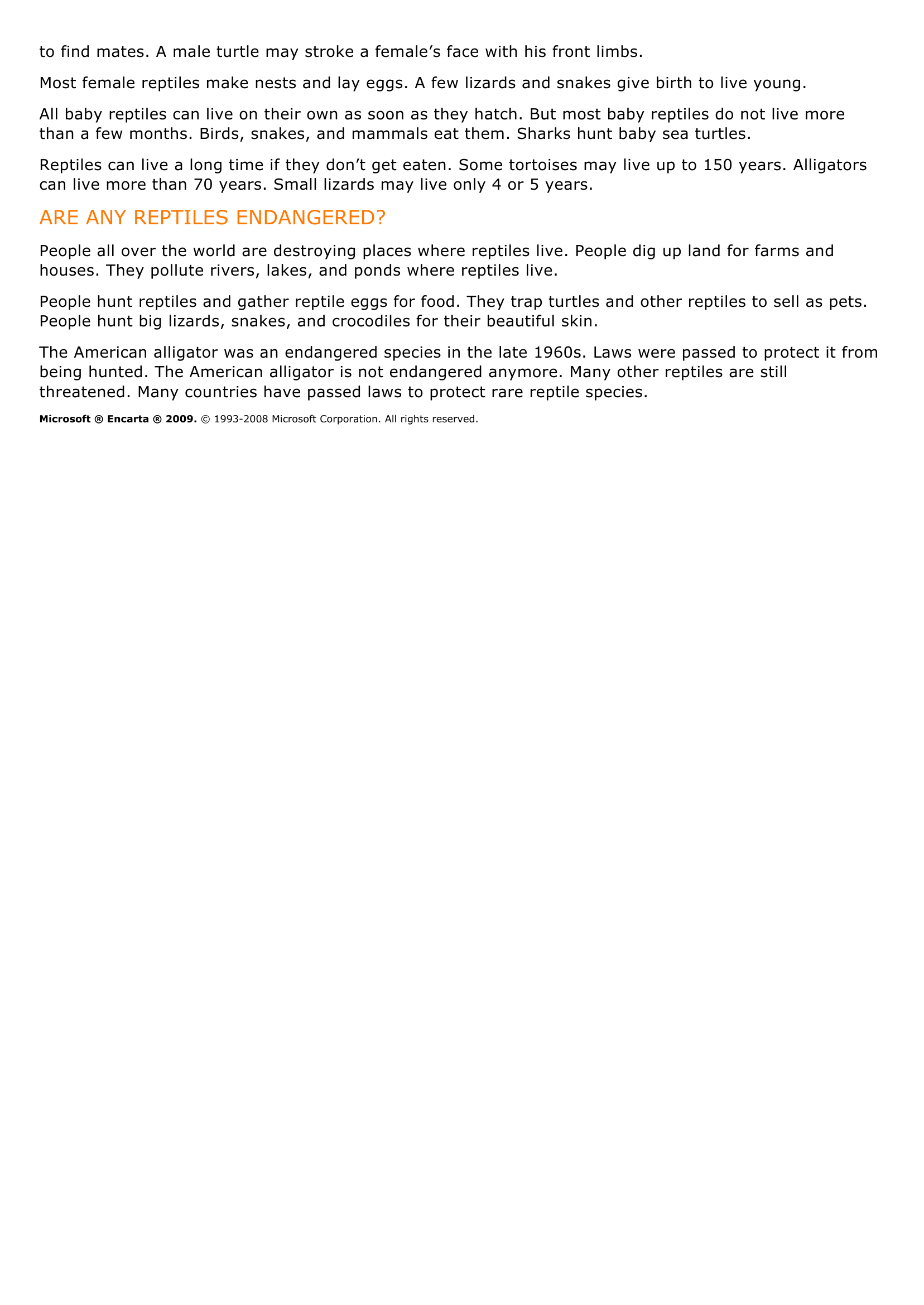Reptiles.
Publié le 15/05/2013

Extrait du document
«
to find mates.
A male turtle may stroke a female’s face with his front limbs.
Most female reptiles make nests and lay eggs.
A few lizards and snakes give birth to live young.
All baby reptiles can live on their own as soon as they hatch.
But most baby reptiles do not live morethan a few months.
Birds, snakes, and mammals eat them.
Sharks hunt baby sea turtles.
Reptiles can live a long time if they don’t get eaten.
Some tortoises may live up to 150 years.
Alligatorscan live more than 70 years.
Small lizards may live only 4 or 5 years.
ARE ANY REPTILES ENDANGERED?
People all over the world are destroying places where reptiles live.
People dig up land for farms andhouses.
They pollute rivers, lakes, and ponds where reptiles live.
People hunt reptiles and gather reptile eggs for food.
They trap turtles and other reptiles to sell as pets.People hunt big lizards, snakes, and crocodiles for their beautiful skin.
The American alligator was an endangered species in the late 1960s.
Laws were passed to protect it frombeing hunted.
The American alligator is not endangered anymore.
Many other reptiles are stillthreatened.
Many countries have passed laws to protect rare reptile species.
Microsoft ® Encarta ® 2009. © 1993-2008 Microsoft Corporation.
All rights reserved..
»
↓↓↓ APERÇU DU DOCUMENT ↓↓↓
Liens utiles
- Premiers vertébrés à s'être entièrement affranchis du milieu aquatique, grâce à l'élaboration d'annexes embryonnaires, les reptiles ont dominé le monde à l'ère secondaire, avant d'être supplantés par leurs descendants, les mammifères et les oiseaux.
- Les Sauriens: chez les Reptiles, une espèce sur deux est un lézard.
- Le sphénodon: chez les Reptiles, il forme un ordre à lui tout seul.
- Les Crocodiliens: de grands reptiles condamnés à disparaître.
- Le monde des Reptiles: un règne de deux cents millions d'années.
















